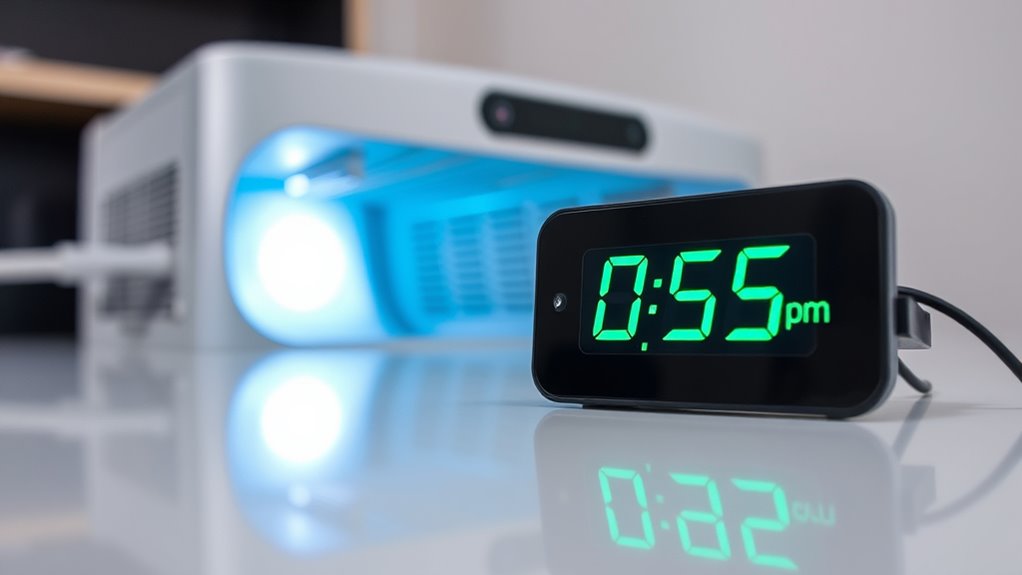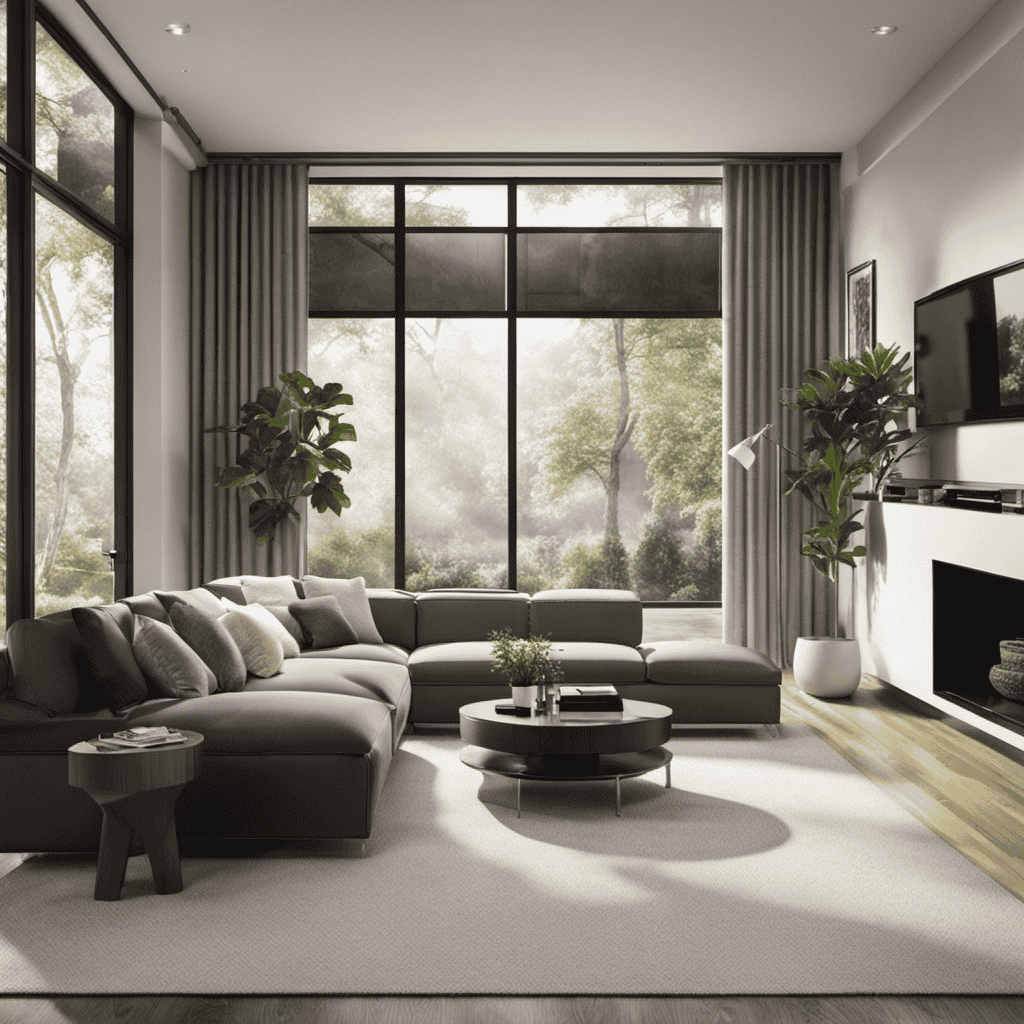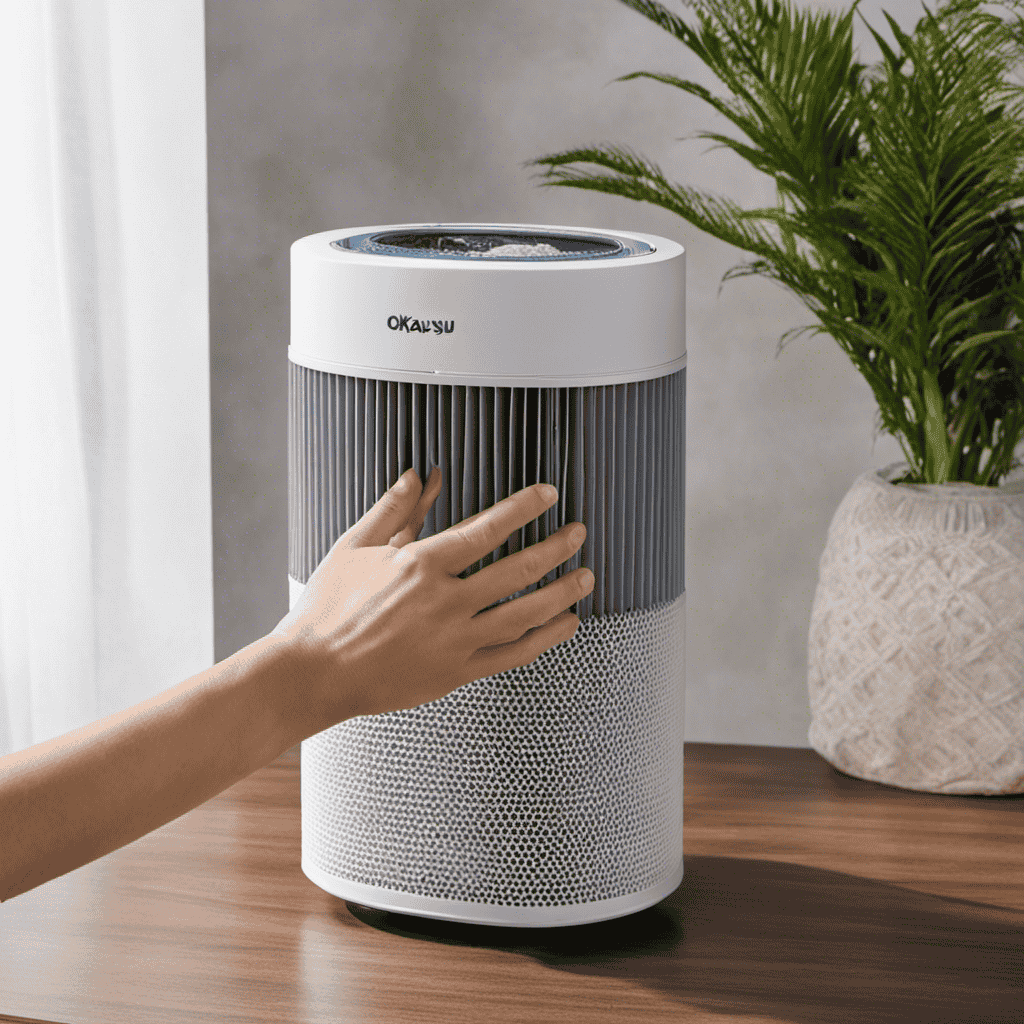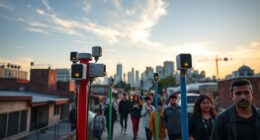Ionizer ozone output can be dangerous if it exceeds the safe limit of 0.05 ppm, which is set to protect your health. High ozone levels can irritate your lungs, cause coughing, and pose long-term risks, especially for sensitive groups. That’s why manufacturers and regulators emphasize maintaining ozone below this limit. If you want to learn how to ensure your device stays safe and effective, there’s more important information to consider.
Key Takeaways
- Ozone levels above 0.05 ppm can irritate lungs and cause health problems, making safe operation crucial.
- Many ionizers are designed to produce ozone below the 0.05 ppm safety limit, adhering to regulations.
- Excessive ozone output from ionizers can pose serious health risks, especially for vulnerable groups.
- Always check for safety certifications and ozone emission labels when choosing an ionizer.
- Maintaining ozone emissions below 0.05 ppm minimizes health risks and ensures safer air purification.

Ionizer ozone output safety is a *crucial* concern when using air purifiers that generate ozone. Ozone health risks can be serious if ozone levels become too high, which is why understanding safety regulations is *essential*. Manufacturers often produce ozone generators that claim to clean the air effectively, but these devices must adhere to strict standards to prevent harm. The main concern is how much ozone is released during operation, and the 0.05 ppm (parts per million) limit is a key benchmark set by health authorities to protect consumers.
When you use an ionizer or ozone generator, you might wonder how much ozone is safe to breathe. The 0.05 ppm rule is designed to minimize health risks, especially for sensitive groups like children, the elderly, or those with respiratory conditions. Ozone at high concentrations can irritate your lungs, cause coughing, throat discomfort, and worsen asthma symptoms. Even at lower levels, excessive ozone exposure can lead to long-term health issues. *Hence*, understanding and respecting the 0.05 ppm threshold is *crucial* to *ensuring* your safety while enjoying cleaner air.
Safety regulations are in place to guide manufacturers in controlling ozone output. Agencies like the U.S. Environmental Protection Agency (EPA) and the California Air Resources Board (CARB) have established guidelines to limit ozone emissions from household air purifiers. These regulations specify that devices should not produce ozone levels exceeding 0.05 ppm during normal operation. When you purchase an air purifier, checking for compliance with these safety standards helps *make sure* you’re not exposing yourself or your family to dangerous ozone concentrations. Many reputable brands now include safety certifications or ozone emission labels indicating they meet these regulations.
Safety standards ensure ozone emissions stay below 0.05 ppm for safe indoor air purification.
While some devices claim to generate ozone for better purification, it’s *essential* to verify their ozone output. If a device’s ozone levels surpass the 0.05 ppm limit, it could pose health risks rather than provide benefits. In such cases, it’s better to opt for models that have been tested and verified to produce minimal ozone, or consider alternative purifiers like HEPA filters, which don’t generate ozone at all. Remember, the goal is to improve indoor air quality without compromising your health.
Additionally, understanding ozone regulation standards can help consumers make informed decisions and choose safer air purification options.
Frequently Asked Questions
Can Ozone Levels Vary Between Different Ionizer Models?
You’ll notice ozone levels can vary between different ionizer models due to ionizer variability and model differences. Some models produce higher ozone output, while others are designed to keep emissions low. It’s important to check each device’s specifications and ozone emission levels, especially if you’re concerned about safety. Understanding these differences helps you choose an air purifier that balances effective purification with safe ozone levels for your space.
Are There Health Risks for Sensitive Populations at 0.05 Ppm?
Like a whisper in a quiet room, 0.05 ppm of ozone might seem harmless, but for vulnerable populations, even this gentle hum can pose risks. Long-term exposure at this level could subtly irritate the lungs or exacerbate existing conditions. If you’re sensitive or caring for someone who is, it’s wise to monitor ozone levels closely and limit prolonged exposure, ensuring safety isn’t sacrificed for fresh air.
How Does Room Size Affect Ozone Safety Levels?
When considering ozone safety levels, you should think about room volume and ventilation rate. A larger room volume dilutes ozone more effectively, reducing potential risks. Good ventilation helps remove ozone faster, keeping levels below the 0.05 ppm threshold. To stay safe, verify your ionizer operates in well-ventilated spaces with adequate room size, so ozone doesn’t accumulate to dangerous concentrations.
Is There a Way to Measure Ozone Output at Home Accurately?
Like a watchful eye, accurate ozone measurement keeps you safe. You can DIY measure ozone output using affordable sensors or ozone test strips, but calibration techniques are key to reliability. Regularly calibrate your device with known standards, and follow manufacturer instructions carefully. While not as precise as professional tools, these methods give you a good sense of ozone levels at home, helping you stay within safe limits.
Do All Air Purifiers With Ionizers Produce Ozone?
Not all air purifiers with ionizers produce ozone, but many do, especially if they use electrodes that deteriorate over time. Electrode degradation can increase ozone output, so it’s important to select models with proper ozone filtration and safety features. Always check the ozone emission levels, ideally under 0.05 ppm, to ensure safe operation and minimize health risks associated with ozone exposure.
Conclusion
So, think of the 0.05 ppm rule as a cautious guardian guarding your air. While ionizers can be helpful, their ozone output is like a double-edged sword—too much, and it’s like inviting a storm into your home. Keep an eye on the levels, stay informed, and you’ll navigate the air safely. Remember, a little vigilance keeps your indoor environment shining bright, like a clear sky after a storm.










